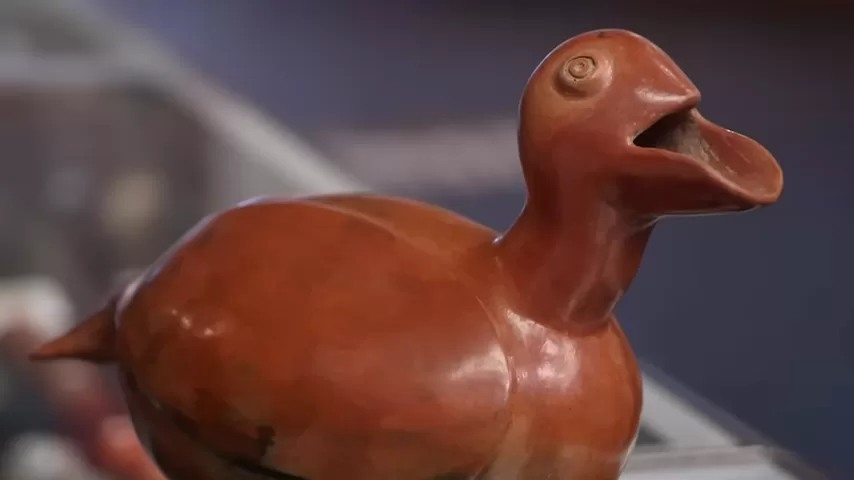Sometimes in the world of antiques, it’s not just age that captures attention—but mystery. And when one woman walked into a pawn shop holding what looked like an old pottery duck from Colima, Mexico, she brought with her more than a piece of ancient art—she brought a story filled with strange sounds, falling objects, and a little bit of spookiness.
“I got it at an antique shop in Scottsdale, Arizona,” she said. “And ever since then, weird things started happening around the house… everything just started falling around the duck.”
Whether haunted or simply well-crafted, this duck wasn’t just decor. It turned out to be a 2,000-year-old funerary artifact, tied to one of the most artistic and spiritual cultures of ancient Mesoamerica.
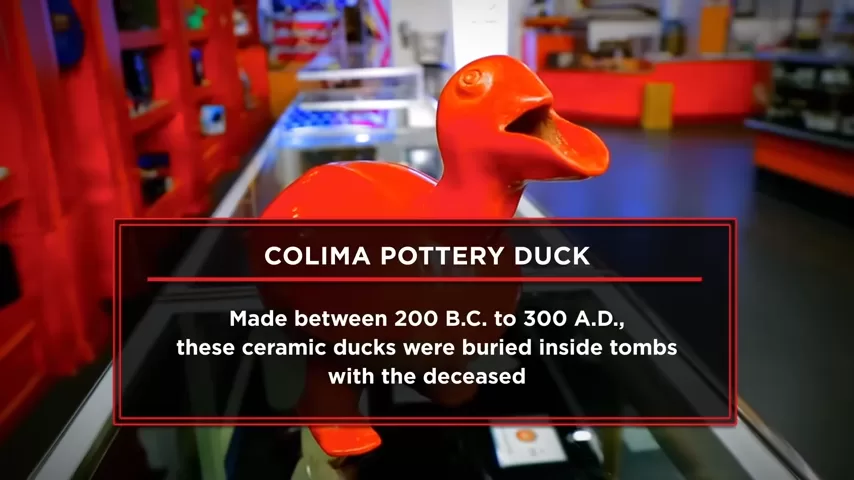
Meet the Colima Culture: Artists of the West
The duck is believed to come from Colima, a state in western Mexico known for its ancient shaft tombs and extraordinary ceramic figures. Between 300 BC and 300 AD, the Colima people created stylized, symbolic pottery animals—dogs, birds, monkeys, and more—that were buried with the dead.
“They believed animals guided souls into the afterlife,” explained an expert called in to evaluate the piece. “Some were spirit guides, others were food for the next world.”
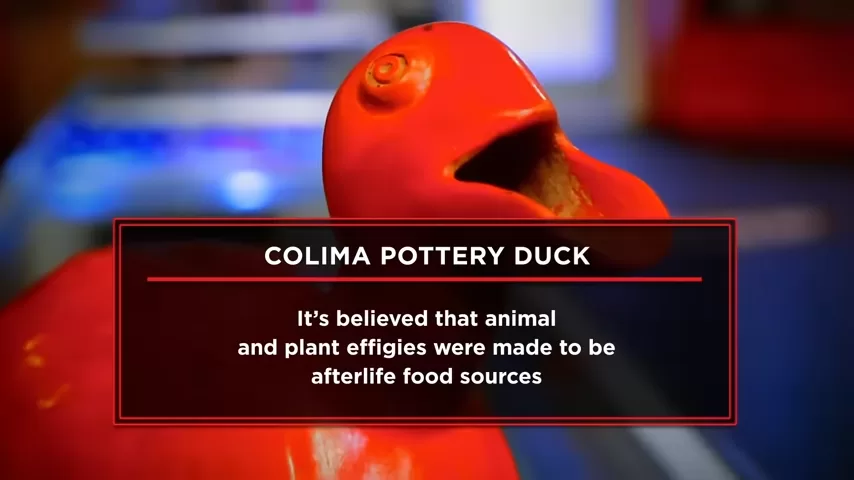
The duck, in particular, symbolized abundance and sustenance. A plump bird like this would likely represent a funerary feast for an elite individual, buried with them to ensure they were well-fed in the great beyond.
Form, Function, and Finish
Though it may look whimsical to modern eyes, the duck was expertly crafted using traditional Mesoamerican techniques:
- Burnishing: The surface shows fine polishing lines, where artisans used a smooth stone to burnish the clay before firing it. This gave it a rich, almost wooden sheen.
- Kiln Marks: The bottom still bears kiln burn marks, authenticating it as a fired ceramic from the pre-industrial era.
- Manganese Blooms: A faint blackish patina on the surface, caused by mineral deposits over centuries, is another hallmark of ancient pottery.
“If you looked at this from a few feet away, you’d swear it was carved from wood,” said the shop owner. “It’s that beautifully done.”
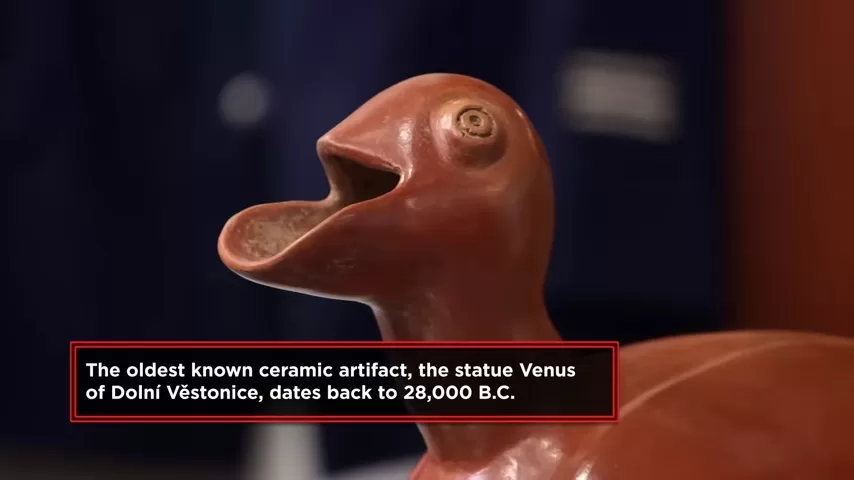
And despite being two millennia old, the piece was in exceptional condition—thanks to being buried in a sealed tomb for centuries. The only flaw? A minor restoration, masterfully done and almost invisible to the naked eye.
Authenticity Confirmed
To verify the artifact’s age and value, the shop brought in Bob, a seasoned expert in pre-Columbian art.
“This piece is 100% real,” he said confidently. “It’s ancient. It’s rare. It’s stunning.”
According to Bob, the duck dates between 300 BC and 300 AD, making it over 1,700 years old at minimum. He confirmed it was not a modern reproduction or tourist-market fake—an all-too-common issue with ancient-looking artifacts in Mexico.
“I don’t need an X-ray machine for this,” he explained. “It’s got all the signs—burnishing lines, manganese blooms, restoration seams. It’s authentic.”

So, What’s It Worth?
Initially, the seller was hoping for $4,000—a fair price, she thought, for something “that old” and, perhaps, “that cursed.”
But Bob’s expert appraisal came in at $8,000.
“This would’ve belonged to someone important,” he explained. “You didn’t get a duck this big and beautiful unless you were high status.”
Despite its impressive value, the shop offered $4,000, citing the niche market and the challenge of selling ancient funerary art. After all, not everyone wants a spirit guide duck with a side of supernatural baggage in their home.
“Luckily, I’m not superstitious,” the shop owner laughed as he made the deal.
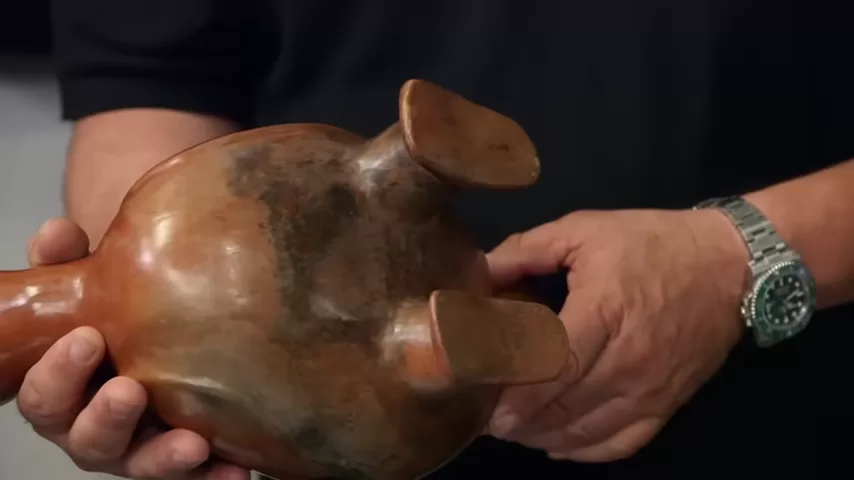
The Spirit of the Duck: Beyond Its Price Tag
For collectors of pre-Columbian artifacts, pieces like this are rare gems. Not only is it a tangible link to an ancient worldview, but it’s also a testament to the artistic skill and spiritual beliefs of a people who lived long before Columbus ever set sail.
- Cultural value: The Colima culture is considered one of Mesoamerica’s most artistic societies.
- Symbolic meaning: Animals like ducks, dogs, and birds were believed to travel with humans in the afterlife.
- Market demand: Authentic, museum-quality Colima pottery can fetch $5,000–$15,000 depending on rarity, size, and provenance.
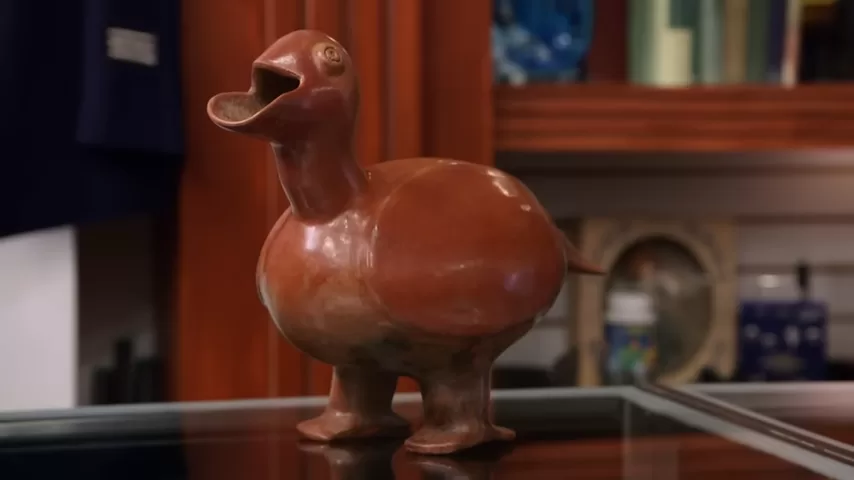
Closing Thoughts: Haunted or Honored?
Whether or not you believe in its “magic powers,” one thing is clear: this pottery duck is more than just clay and paint. It’s an artifact of belief, shaped by a society that saw death not as an end, but as a journey.
“I just want to get rid of it,” the seller joked. “Let someone else deal with the duck.”
Now safely in the hands of professionals (and presumably free of poltergeists), the duck is off to begin a new chapter—maybe in a collector’s showcase, a museum, or perhaps as the centerpiece of someone else’s strange story.
